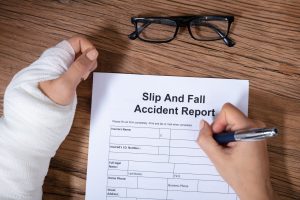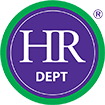
Just because they are non-fatal, doesn’t mean they can’t be serious. In one HSE case study, a woman lost her leg due to slipping. She actually slipped twice, first on leaves which had been left to decompose outside a hospital and again six years later, on an unmarked wet floor. This led to painful muscle spasms and an eventual amputation.
While this is an extreme example, it nevertheless reveals how neglecting good health and safety practice can cause dangerous slip and trip injuries.
Slips, trips and falls: the law
The Health and Safety at Work etc. Act 1974 says that it is your responsibility as an employer to ensure, so far as is reasonably practicable, the health and safety of all your employees and others who may be affected by their work. Taking steps to control slip and trip risks falls under this obligation.
The term “so far as is reasonably practicable” means that the degree of risk in a particular situation should be balanced against the time, trouble, cost and physical difficulty of taking measures to avoid the risk. It is the responsibility of the employer to justify this balance and therefore it’s important that sensible safety solutions are considered, reviewed and implemented in a reasonable period.
Two more relevant regulations to be aware of are The Management of Health and Safety at Work Regulations 1999 (Regulation 3), and The Workplace (Health, Safety and Welfare) Regulations 1992 (Regulation 12). The former concerns your responsibility to assess and address slip and trip risks and the latter requires floors to be suitable, in good condition and free from obstructions.
Your employees also have a duty not to put themselves or others in danger, and must use any safety equipment provided to avoid slipping, tripping or falling.
Preventing slips and trips at work
You should control slip, trip and fall hazards in your workplace as part of your risk assessment. Often this will involve nothing more than common sense. For example, if your workplace sees a lot of foot traffic, you might consider making the floors of your business non-slip to avoid excess rain water being brought in. This is how the risk was eventually resolved in the story above following the lady’s second serious fall.
You are probably already taking steps, but a thorough risk assessment may identify more that can be done. Other straightforward measures include:
- Ensuring spills are cleaned up promptly
- Not relying on extension cords trailing over walkways
- Making sure the lighting is sufficient so potential obstructions can be seen
- Having good quality entrance matting
- Storing boxes and equipment properly – not strewn across the floor
- Being aware of seasonal risks like ice
It is also a good idea to ask your employees what they think the hazards are, as they may notice things that are not obvious to you.
Managing slip, trip and fall risk
Communicating these measures to your employees to ensure their health and safety is also part of good practice. For example, ensure employees know when and how to report damage to floors or mats. They should also be aware of what trip or slip hazards look like and how to prevent them as part of effective training, supervision and induction.
An example of good management initiative comes from an HSE case study in which a council reduced slip accidents amongst catering staff by sourcing a non-slip overshoe for use on a variety of floor surfaces. The overshoe was 100% effective in eliminating slips over a two-month trial period.
For further support with slips, trips and falls
As we have seen, slips, trips and falls are the leading cause of non-fatal injuries in the workplace and represent a risk to all types of business. If you want to bring in better risk prevention processes, our experts can help you keep your employees safe and you legally compliant. Call us today to find out how we can help.

